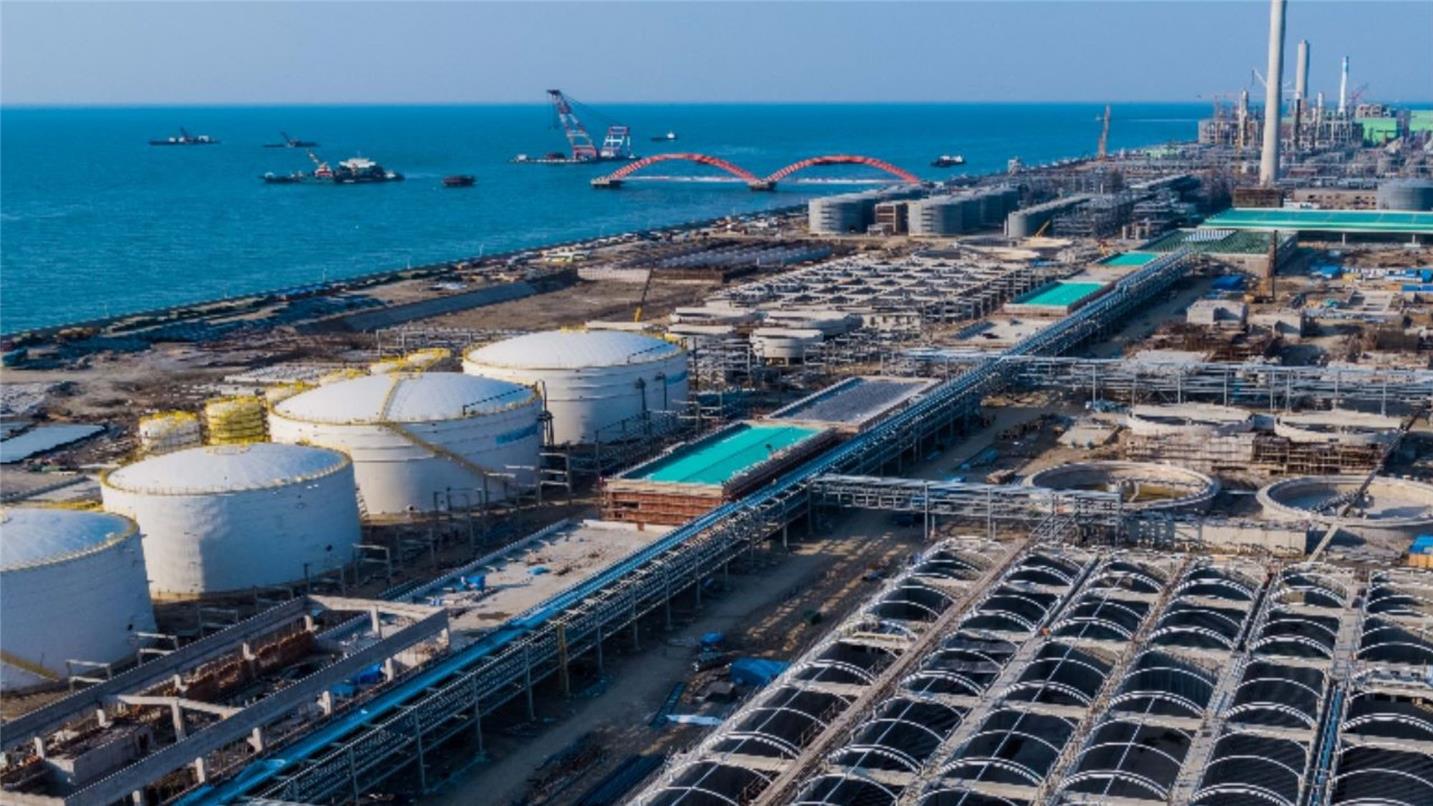The mission
Large petrochemical enterprises are the backbone of the national economy, and is also the object of wastewater treatment across the country. Wastewater of petrochemical enterprises comes from the various upstream production facilities, and is of complex and diverse water quality. To meet the needs of the local environment, the supporting wastewater treatment facilities become an indispensable part of petrochemical enterprises.
The Hengli refining-chemical project is based on the Bohai economic circle, located by the seaside of the beautiful and pleasant Changxing Island, Dalian; it is an important part of Hengli Petrochemical Industry Park. The environmental capacity of the Bohai Gulf area, where the industry park is located, has reached close to the threshold. It is one of the most heavily polluted areas in the country, and is one of the most water-scarce areas due to the concentration of industrial enterprises.
The project features large scale, oil refining scale at 20 million tons/year, up to 31 major refining units, complex pollutant composition with wastewater discharged by the devices, great difficulty with wastewater treatment, and high discharge and reuse requirements. The project discharges 36,000 tons of refinery wastewater per day, and reuse water discharging 7,800 tons of RO brine, plus the PTA project with annual output of 6.6 million tons, Hengli Petrochemical is challenged by the pressure of a huge amount of total pollutant emissions.
Meanwhile, on the other side of the island, just 20 km from the industry park, there is a beautiful Spotted Seal National Nature Reserve. Spotted seal is the only fin-footed species bred in the seas across China. They are rare and are second-class protected animals. They inhabit China, North Korea and South Korea as they travel, and have gradually become an independent group. There are 8 breeding areas for spotted seals around the world, while the icing area of Liaodong Bay of Bohai is the southernmost one among the 8 breeding areas, thus boasting important significance in ecological protection.
Therefore, in addition to meeting the stringent requirements of the integration project itself, we believe we have the responsibility to adopt most advanced methods and ideas to render a project of higher quality, so as to protect the habitats of the spotted seals, and meanwhile, to maximize the economic and social benefits for our clients.
20
million
31
tons/day
tons/day
Our solution
In the project, SUEZ has provided an integrated solution for wastewater treatment, water reuse and final brine discharge, adopting the group's unique Sediflotazur®, DensaDegTM, Biofor®, Oxyblue® and among 24 main technique units and 12 patented technologies.
To cope with the complex refinery effluent and the stringent treatment requirements, SUEZ works closely with Hengli and has incorporated the "embedded WWTP" concept early at the beginning of the project design. The design of the WWTP is targeted to the upstream devices. By synthetically analyzing the source, characteristics and production processes of the pollutants (water, gas, slag) produced by upstream facilities, the treatment plant collaborates with the upstream petrochemical installations in design, makes use of wastes produced at each process to treat "waste" by "waste", while at the same time optimizing the resource allocation during wastewater treatment, thereby saving the consumption of conventional resources, reducing secondary pollution, and maximizing the social economic and ecological benefits.
Embedded point 1: utilization of exhaust CO2 in hydrogen-from-coal production
Traditional practice:
The wastewater treatment process requires adding acids and bases as pH adjusting agents.
A large amount of CO2 is generated during production of hydrogen from coal. According to the traditional practice, it is directly discharged.
Embedded WWTP:
The large amount of CO2 generated during production of hydrogen from coal is introduced into the wastewater treatment process, as a pH adjusting agent.
Embedded point 2: utilization of exhaust ozone in advanced wastewater treatment
Traditional practice:
After advanced wastewater treatment using ozone, the exhaust, upon destruction, is directly discharged.
Embedded WWTP:
The exhaust ozone is introduced into the aerobic zone of biological treatment as a complement to the gas source.
Embedded point 3: utilization of fusel
Traditional practice:
Denitrification in wastewater treatment needs the supplement of carbon source.
Embedded WWTP:
The industrial waste fusel is used as a carbon source for wastewater treatment.
Embedded point 4: reuse of reclaimed water
Traditional practice:
In respect of recycling system, a conventional wastewater system produces low quality of treated water, with low recycling ratio, so a large number of wastewater is directly discharged.
Embedded WWTP:
By adopting targeted treatment processes, the plant forwardly raises the treated water quality index, and most wastewater is recycled, few or no wastewater is discharged.
The results
The Hengli petrochemical refining integration project, by using the "embedded WWTP" model, is to build a WWTP with global-leading quality, ensuring all indicators exceed the most stringent standards available and meanwhile, bringing down the direct corporate operating cost by more than 23 million yuan per year (not including the cost of water savings), and also effectively reducing the emissions of pollutants; it has therefore benefited the company, the society and the ecological environment, and also guarded the beautiful Spotted Seal Nature Reserve.
Utilization of exhaust CO2 in hydrogen-from-coal production: Reducing CO2 emissions by 2,116 tons / year, reducing agent dosage by 9,506 tons / year
Utilization of exhaust ozone in advanced wastewater treatment: Reducing blowers' energy consumption by 7.01 million kWh / year
Utilization of fusel: Reducing carbon source dosage by 1,460 tons / year
Reuse of reclaimed water: Reducing water demand by 14 million tons / year
The resource and environmental issues are common challenges for the mankind. Promoting green development is the common choice of the major economies around the globe. SUEZ does not think of itself as merely a "Receiving and Treating Unit at Wastewater Terminal", instead, we think we are engaged in a socially responsible undertaking; by promoting the "embedded WWTP" concept, we are committed to being an "Environment-friendly Resources Integration Unit".
tons/year
tons/year
million
million
million

